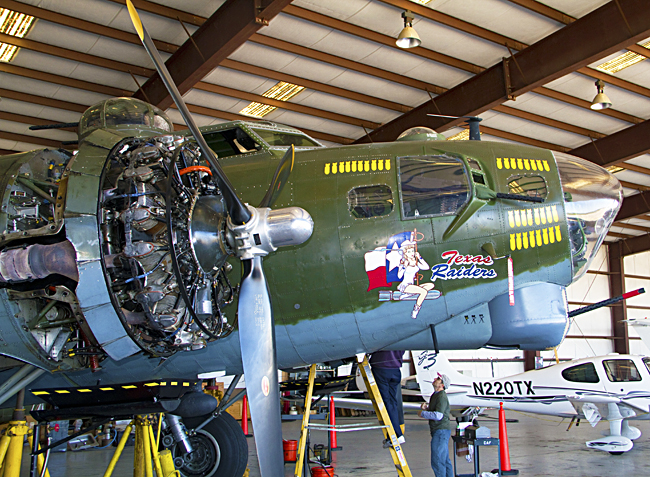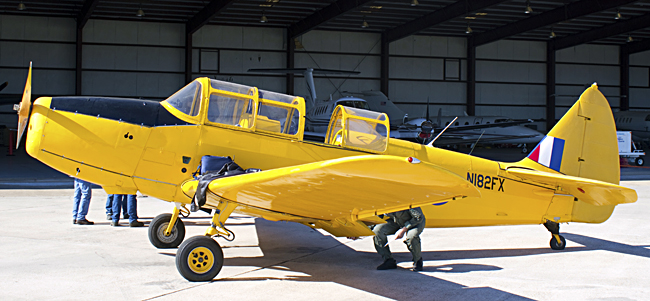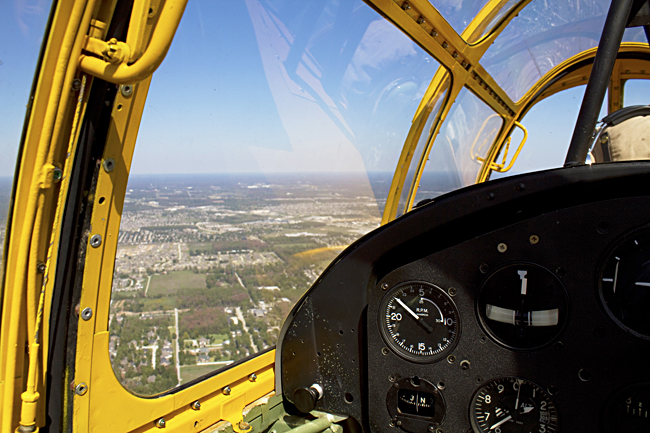Commemorative Air Force
Today, a morning with the Commemorative Air Force. The University of Houston's College of Engineering presents this series about the machines that make our civilization run, and the people whose ingenuity created them.
I recently visited the Texas Raiders Group of the Gulf Coast Wing of the Commemorative Air Force or CAF. Remember the CAF's tongue-in-cheek original name, the Confederate Air Force (as in "Save your Confederate dollars, the south will rise again".) It was and is made up of scattered WW-II vintage airplanes which have, indeed, risen like Phoenixes out of the ashes of forgetfulness. But, on an increasingly large public stage, the CAF needed a name that was less of an in-group joke -- one that better expressed its real purpose. That purpose is to commemorate the heroes of our darkest hour -- to resurrect the planes in which some 88,000 Americans died fighting a truly desperate war. [The name was changed in 2002.]
Yet the horrors of that war seem so distant in the still air, this cool sunny day. The most obvious occupant of the remote hanger is one of the few still-airworthy B-17 Flying Fortresses -- the iconic bomber of the war. But before airmen got to the big bombers or fast fighter planes, they had to learn to fly.

The "Texas Raiders" B-17, Flying Fortress undergoing maintenance
WW-II pilots learned the rudiments of flight in primary trainers. On the eve of the war, those were usually Stearman biplanes. We're familiar with them, because so many became crop-dusters after the war. Who can forget the Stearman attacking Cary Grant in Hitchcock's movie North by Northwest. Then Fairchild provided a trainer with a single low-wing, the PT-19. It had more the shape of current fighter planes, but with tandem open cockpits. Fairchild provided the Canadians with a closed cockpit version in 1944 -- the PT-26. They were then naming training planes after universities. This one became the Cornell.

Fairchild's primary trainer, the PT-26, Cornell
My host owned a Cornell which sat, all cheerful yellow, in the shadow of the olive-drab Flying Fortress. "Would you like to go for a ride," he asked. I would indeed. He strapped me into the rear instructor seat, and took the forward student pilot seat. And I was suddenly living in another time. The sun glowed through the translucent fabric -- all that separated me from the air outside. The flight gave an intimacy with the air unlike I've had in an airplane -- feeling every minor correction and gust in the drafty cockpit. This was no jet hurtling along like a missile, but actual flight. We moved through the air rather as a bird might do.

View from the rear cockpit of the Fairchild PT-26, Cornell
The Army Air Force, in desperate haste, ordered 6400 of these trainers. And many of the 13,000 airmen who died before combat, died in planes like this. Then, those still standing were hurled into the chaos with minimal experience.
So CAF volunteers create this colorful Air Force of reconstituted airplanes -- American, Japanese, German. CAF planes are housed in scores of remote hangers. Air Shows provide only partial support for their vast effort. But they are where this living museum emerges publicly. And, when it does, we glimpse just a bit of the texture of the worst war in human history.
I'm John Lienhard, at the University of Houston, where we are interested in the way inventive minds work.
My deep appreciation to Wing Leader Don Price of the Texas Raiders Group of the CAF who hosted my October 29, 2011 visit. Price is also the owner of the Fairchild PT-26, Cornell. For a video clip of the takeoff and landing from within the airplane CLICK HERE. (This large file might load slowly.)
See also the Wikipedia entry under Commemorative Air Force. All photos, and video of the Fairchild flight, by John Lienhard.
See also Episode 2750.
US military fliers flew as the Army Air Service until 1926. They then became the Army Air Corps until 1942 when the Army Air Force was formed. In 1947, the US Air Force became a separate branch of the US military. However, the Army, Navy, Marine Corps, and Coast Guard also have a considerable variety of airplanes today.
This episode was first aired on November 7, 2011